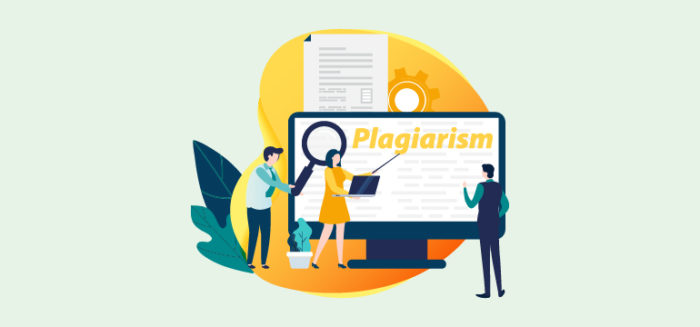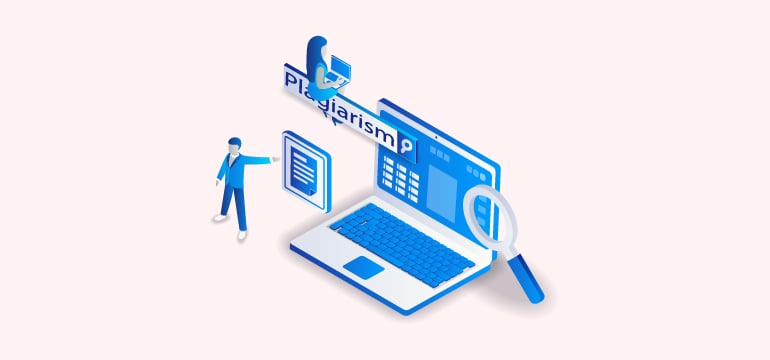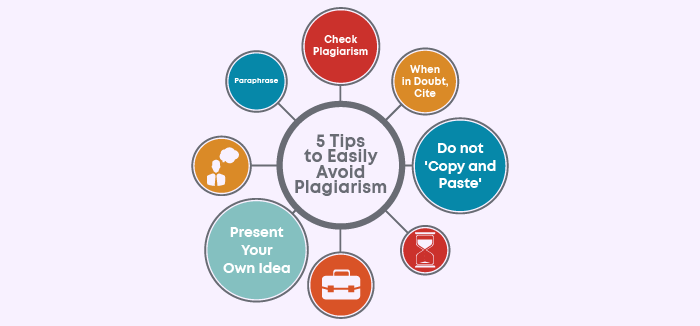How to avoid common types of Plagiarism

We all know that plagiarism is cheating. Merriam- Webster explains plagiarism as “to steal and pass off (the ideas or words of another) as one’s own: use (another’s production) without crediting the source [… or] to commit literary theft: present as new and original an idea or product derived from an existing source.”
Roughly the three most common types of plagiarism are:
- Copy/pasting someone else’s words without crediting the source
- Using someone else’s idea without crediting the originator
- Citing the source inaccurately
Seven common types of plagiarism are committed, which are;
Verbatim plagiarism:
When you do a direct copy/paste of someone else’s document in your own document with properly citing the source. Even if you change a few words or use synonyms, but the majority of the words are unchanged; this is also verbatim plagiarism.
You must put the copied source in quotation marks and include a citation.
Paraphrasing plagiarism:
Paraphrasing is the most common type of plagiarism. It is when you rephrase sentences and write them in your own words. It might not get caught by a plagiarism checker. If you pull out ideas from different sources and rephrase and try to pass them on as your own is also plagiarism. If you have done a translation, and not cited the source, it is plagiarism as it’s someone else’s work that you are trying to pass as your own.
Pro-tip in the form of a good paraphrasing tool
Patchwork plagiarism:
Incremental plagiarism is also known as ‘patchwork’ or ‘mosaic’ plagiarism. This is another form of paraphrasing plagiarism. When you take text from different sources and copy/paste it to create a new text. This might include rewording and usage of synonyms. Good plagiarism checker applications will flag this form of plagiarism.
Global plagiarism:
This is another form of plagiarism, which has become very popular among colleges and universities students. There are so many sites that are ready to write essays, reports, thesis, and assignments for students. They charge for writing clients’ papers. Whether you get a family member, friend, or anyone to write your assignment and you present it as your own, it is plagiarism.
Self-plagiarism:
This type of plagiarism is quite tricky. You may hand in the same assignment that you have done before in another class. You might have done assignments before on the same topic, and you write a fresh assignment using ideas that you have submitted before. If you cite your previous work, your teacher should not object. However, to be safe, consult your teacher about this and the institution’s policy on self-citing.
Citing an imaginary source:
Quoting from a fictitious source is also plagiarism. By indulging in this practice, you are misleading your readers. If you are a student, you are trying to fool your teacher. You are providing inaccurate information and trying to back it up from a source that does not exist. You will get caught eventually.
Incorrect citation:
To avoid plagiarism, you must credit your sources correctly. You have done all the research required for your work, and you have used a plagiarism checker to ensure that it is plagiarism free content. Your next step should be to make sure that your citations are correct. Yes, you may find this a bit tiring, but you must not cite a statement written by Albert Camus as Jean-Paul Sartre.
Punishment for Plagiarism
The punishment for the different types of plagiarism can vary between severe, moderate, and serious. Verbatim and patchwork plagiarism are considered to be serious, and the punishment can be quite severe. A student can get expelled and a researcher, the writer can lose his job.
Self-plagiarism and incorrect citation are termed as a moderate level of plagiarism. Paraphrasing, citing a nonexistent source, is considered to be severe plagiarism.
Avoid Plagiarism
You can easily avoid any form of plagiarism by using a reliable plagiarism checker. There are a number of free and paid plagiarism detector software applications available. Plagiarismdetector.net is quite a good and free plagiarism detector. It does a deep search which very few free plagiarism detectors do and provides a result sheet that you can also download,
Even if you don’t plagiarize, it’s still a good idea to use a plagiarism checker API on your website. You never know, you might have accidentally copied someone else’s work. Once you detect plagiarism, you can take steps to remove it. Why be ridiculed for plagiarizing when you did not do it intentionally. So just avoid it and use a plagiarism checker to be a hundred percent sure.




